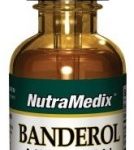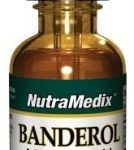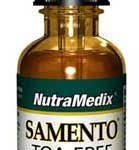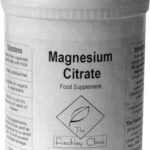As far as names go, Lyme disease doesn’t sound like the worse ailment in the world, but names can be deceptive. Indeed, it can be debilitating and utterly life-changing, but has nothing to do with fruits nor with the colour green; that said, it is caught in the natural outdoors via bites from ticks – and, to that end, it’s an illness that’s all too easy to catch.
Like it or not, many medical experts are of the opinion that Lyme disease is among the most serious of under-discussed health conditions. Caused by tick bites infecting the blood with the bacteria type Borrelia, its many symptoms tend, at first, to be very flu-like (i.e. headache, fatigue and fever1); yet if not detected quickly they can get much worse over time – either quickly or slowly over months or years – leading to problems with the joints, heart and central nervous system2. Serious, indeed.
Diagnosis numbers and issues
The number of Lyme disease cases in the US seem to be ever growing (worryingly so, actually; between 1991 and 2013, they grew from 10,000 to more than 27,000) and, although there are definitely fewer in the UK and Continental Europe, the numbers here are nonetheless still higher than you might expect.
And how the disease plays out for each individual can be miserable to say the least. There’s the particular case of a totally active and healthy 12-year-old girl from the US state of Montana whom suddenly became ‘feverish, dizzy and doubled over with stomach pains every time she tried to exert herself’3; the misery for her owing as much to the fact it took experts some time to correctly diagnose what was wrong with her, as much as her dramatic symptoms – thus, resulting in psychological as well as physical suffering.
Treatment suggestion
Mercifully though, once diagnosed correctly, treatment for Lyme disease is certainly available. One highly recommended course of treatment you might want to try is the Cowden Support Program (CSP) which, intended for treating late-stage Borrelia and Lyme co-infections, should be followed for several weeks; its intention being to tackle most of the root causes of symptoms and to aid in recovery from ‘post treatment’ Lyme disease syndrome. Indeed, so comprehensive is it, thanks to its constituent ingredients, that it also appears to be able to treat other chronic health issues whose causes are even less clear.
Developed by Dr William Lee Cowden, the CSP involves 14 separate Nutramedix products taken rotationally, such as six herbs intended for microbial defence, themselves made up of three separate pairs of herbs. To give you an idea then, the first of these pairs are the herbal supplements Banderol and Samento which, via an in vitro study conducted at the University of New Haven in the US state of Connecticut, were discovered to be effective in eliminating all forms of the bacteria Borrelia burgdorferi (that is, its spirochetes, round-body forms and the biofilm forms)4.
In-the-field evidence
That said, the CSP has been found to reap good results out in-the-field as well. At the 2007 conference for the International Lyme and Associated Diseases Society (ILADS), Richard Horowitz, a medical practitioner based in the US state of New York, claimed the programme had successfully improved the condition of between 70 percent and 80 percent of patients he’d treated for advanced Lyme Borreliosis (after 4-6 months of co-infection)5. And this was the case even when a proportion of those patients had previously shown no sign of improvement after been proscribed multiple courses of antibiotics.
Further – and more recent – evidence of the CSP’s efficacy in treating Lyme disease came to light in 2012 thanks to a nine-month-long study conducted by the Borreliose Centrum Augsburg in Germany, the results of which showed that (according to questionnaire answers) 80 percent of patients involved enjoyed improvements in their symptoms thanks to the CSP, while (according to laboratory blood tests) 90 percent of them did6.
Greater than the sum of its parts
None of this, though, should be that surprising when you look at what the CSP’s ingredients are capable of doing together; for sure, it’s the pooling of these herbal, microbial defence products’ resources that accounts for the Cowden Support Program benefits. Combined together then, they work to provide broad-spectrum action against not just bacteria, but also fungi, parasites and even viruses, while they’re naturally anti-inflammatory too. Now, by contrast, using synthetically-produced pharmaceuticals to treat Lyme disease is likely to be less effective because they simply operate on a far narrower spectrum of capability; in short, patients with late-stage Lyme disease may not get better on pharmaceuticals (like antibiotics) alone because these drugs – unlike the CSP – are incapable of resolving different microbial infections (and tackle the likes of immune dysregulation and gut dysbiosis), all of which can occur along with Lyme disease and provide further complications on top of the symptoms directly caused by the initial infection.
Indeed, to give you an idea here, among the herbal ingredients that make up the Cowden Support Program are:
- Burbur-Pinella – can remove toxins from the brain, nerves and spinal cord
- Parsley – combines with Burbur-Pinella to aid in detoxification of the kidneys, liver, gall bladder, lymphatics and intestinal spaces
- Stevia –effective at eliminating all forms of Borrelia; also a broad-spectrum antiviral herb
- Sealantro – can detoxify heavy metals, biotoxins and various man-made toxins in the body
- Takuna – possesses potent antiviral properties.
Additionally, it ought to be noted that, should you be thinking of giving the CSP a go in trying to treat late-stage Borrelia and Lyme disease symptoms, then they are several different things you should do alongside the herbal course to give you the best chance of successful recovery. To start with, as you may have guessed, consuming water (such a healthy practice in itself) is strongly recommended – as much as 2-3 litres a day, in fact. Practicing stress relief techniques before each mealtime and bed is also advised, while sleep hygiene is also important (getting a proper, good night’s sleep of at least 6-7 hours, so you get all the rest you can), as well as maintaining a sensible, healthy diet, of course. To this end, the likes of raw, organic, non-GMT vegetables are excellent choices, while it’s best to cut out sugars and excessive starchy, fried and processed foods. It’s also been noted that Lyme disease sufferers who stay away from wheat-based and cow-dairy-based foods seem likely to get better faster.
By purchasing each pack required for each month of the Cowden Support Program via The Finchley Clinic you can make significant savings on all the products you’ll need to complete the course; take a look at them below:
Cowden Support Program – Month 1
Cowden Support Program – Month 2
Cowden Support Program – Month 3
Cowden Support Program – Month 4
Cowden Support Program – Month 5
Cowden Support Program – Month 6
Cowden Support Program – Month 7
Cowden Support Program – Month 8
Cowden Support Program – Month 9
References:
- Piesman J., Mather, T. N., Sinsky R. J and Spielman A. ‘Duration of tick attachment and Borrelia burgdorferi transmission’. Journal of Clinical Microbiology. 1987 Mar. 25 (3): 557-558.
- Hu, Linden. ‘Clinical Manifestations of Lyme Disease in Adults’. UptoDate. http://www.uptodate.com/contents/clinical-manifestations-of-lyme-disease-in-adults. Last updated: August 2017.
- Lavelle, M. ‘As Lyme disease spreads in the U.S., those in its path cope with a debilitating, bewildering array of maladies, misery and afflictions’. The Daily Climate. http://www.dailyclimate.org/tdc-newsroom/2014/09/us-lyme-disease. 2014 Sep.
- Datar A., Kaur N., Patel S., Luecke D. F. and Sapi E. ‘In vitro effectiveness of Samento and Banderol herbal extracts on the different morphological forms of Borrelia burgdorferi’. Townsend Letter. http://www.townsendletter.com/July2010/sapi0710.html. 2010 Jul.
- http://www.ilads.org/lyme_programs/conference-videos.php. n.p.
- https://www.youtube.com/watch?v=y3i02bzyMkI




